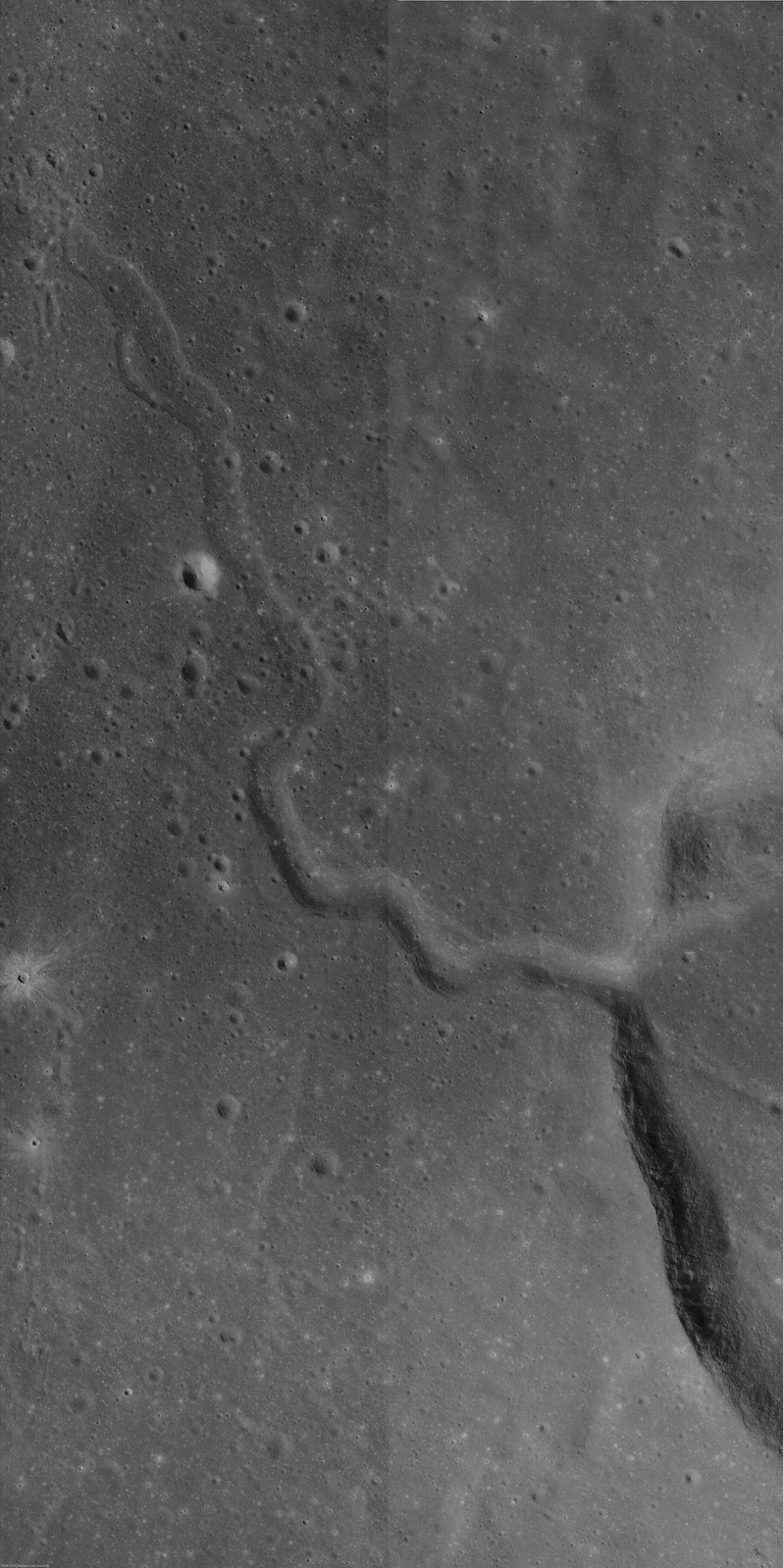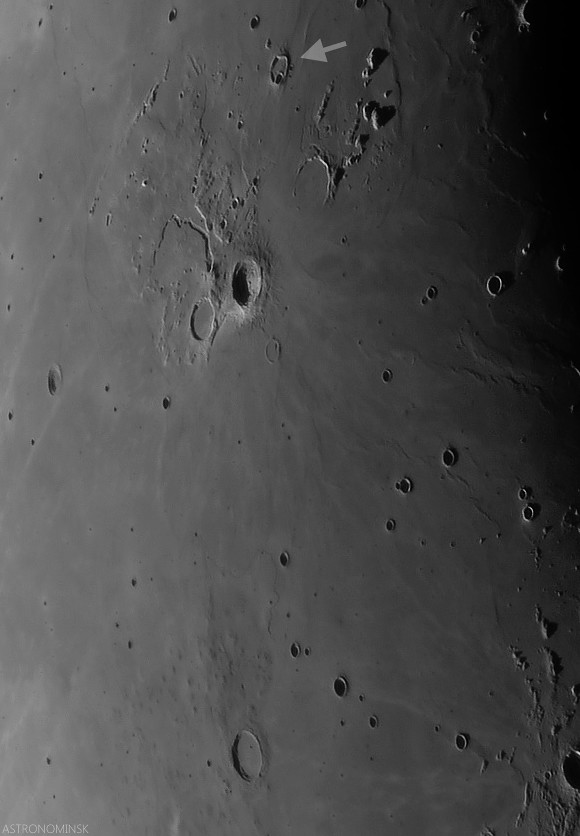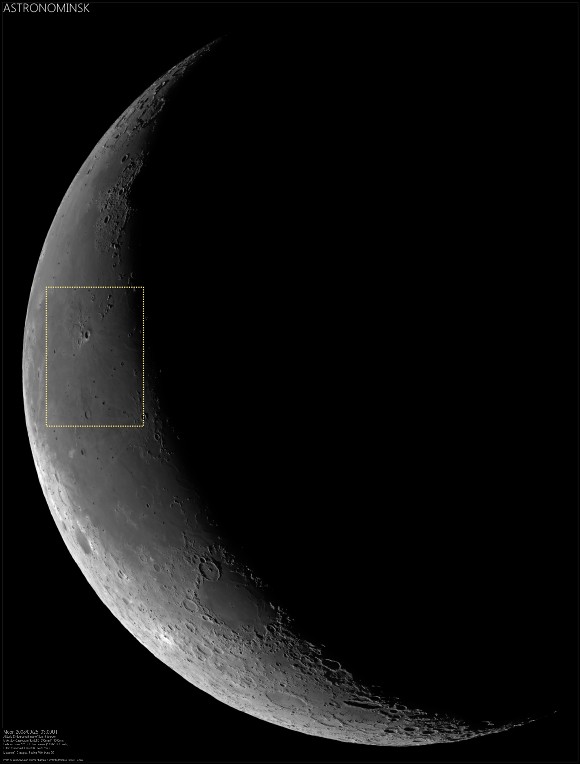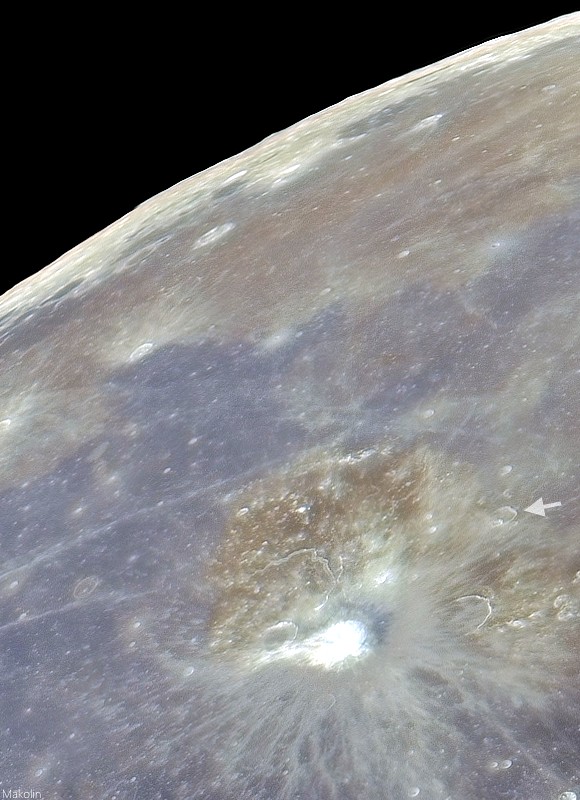 |
| Rima Krieger winds its way through Oceanus Procellarum. Image width is ~ 3.5 km. Taken from LROC NAC observation M1152172510R, LRO orbit 21780, 50.29° incidence angle, resolution 1.35 meters, from 134.64 km over 29.19°N, 313.9°E [NASA/GSFC/Arizona State University]. |
LROC News System
Rima Krieger is located in central eastern Oceanus Procellarum. "Rima", which means "fissure", refers to lunar rilles, a common feature on the lunar surface.
Rilles located in mare deposits can form by two mechanisms, channelized lava flow or lava tube collapse, often combined with tectonic stresses. They display three major morphologies: linear, arcuate, and sinuous.
Rima Krieger is a sinuous rille, meaning that its twists and turns resemble meandering rivers on Earth. Sinuous rilles are thought to have formed as lava became channelized on top of a thick lava flow, as seen at Vallis Schröteri, or as lava flowed across the surface and carved into the substrate.
Rilles located in mare deposits can form by two mechanisms, channelized lava flow or lava tube collapse, often combined with tectonic stresses. They display three major morphologies: linear, arcuate, and sinuous.
Rima Krieger is a sinuous rille, meaning that its twists and turns resemble meandering rivers on Earth. Sinuous rilles are thought to have formed as lava became channelized on top of a thick lava flow, as seen at Vallis Schröteri, or as lava flowed across the surface and carved into the substrate.
 |
| LROC NAC mosaic M1145106645R, LRO orbit 20787, January 23, 2014; 48.1° incidence, resolution 1.34 meters from 134.41 km over 29.9°N, 313.87°E. The original, full-size reproduction of this mosaic can be viewed HERE [NASA/GSFC/Arizona State University]. |
 |
| Local evening view de-emphasizes albedo and emphasizes terrain relief in this telescopic look at a 630 km field of view from Krieger (arrow, north) and Marius. (note the Marius Hills as their low profiles come into view on their namesake's north-northwest. Even the long Marius sinuous rille can be seen winding through the plain just north of those Hills. Krieger's morphology is still dominated by Aristarchus. Late crescent Moon mosaic by Astronominsk, September 25, 2008. |
 |
| Very reduced view of the full-size ASTRONOMINSK late crescent Moon mosaic of 22 images, showing the field of view immediately above in context (inset). Note the differing perspectives on the Aristarchus Plateau, seen from Earth under a high and low Sun due to libration. The full mosaic can be viewed at the ASTRONOMINSK website, HERE. |
Related Posts:




No comments:
Post a Comment
Welcome, Lunatics!